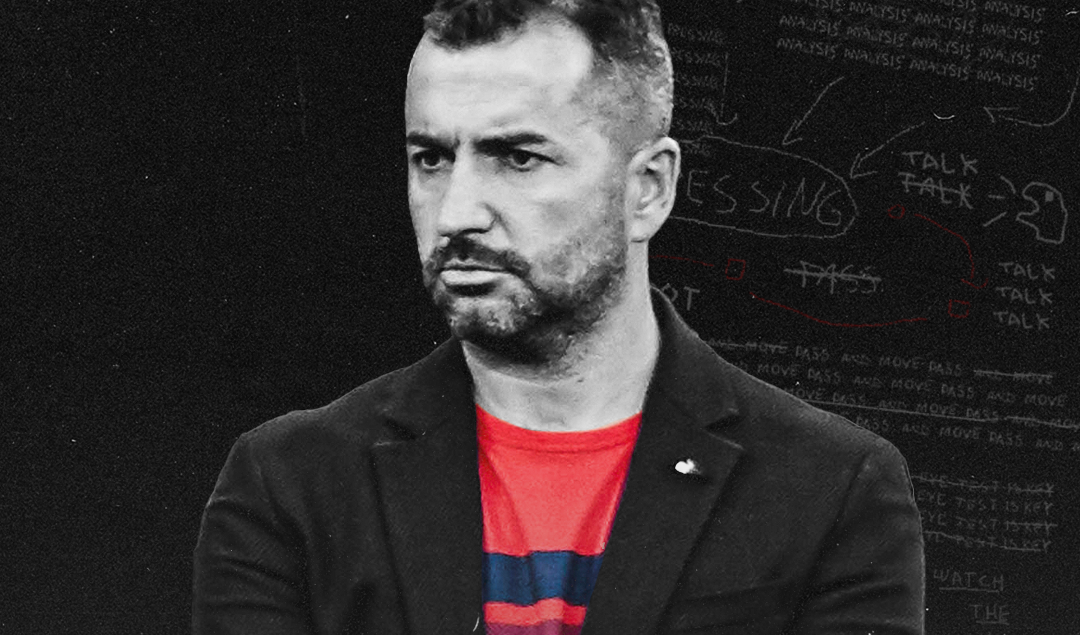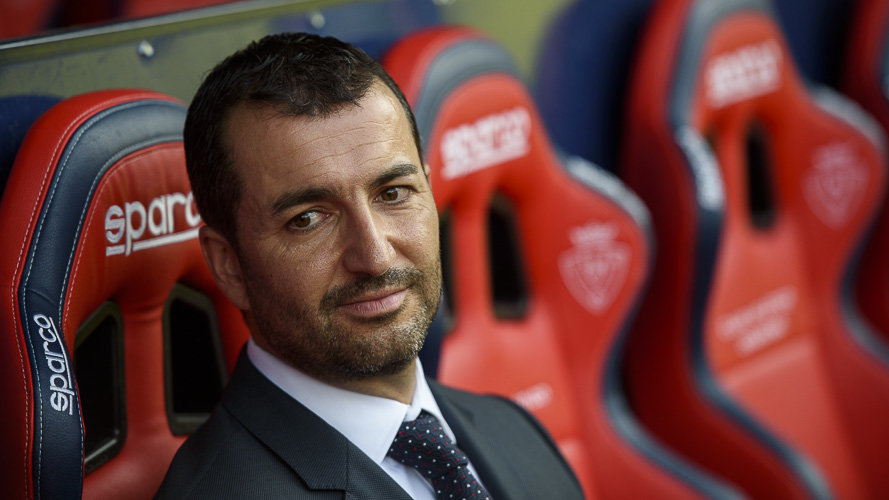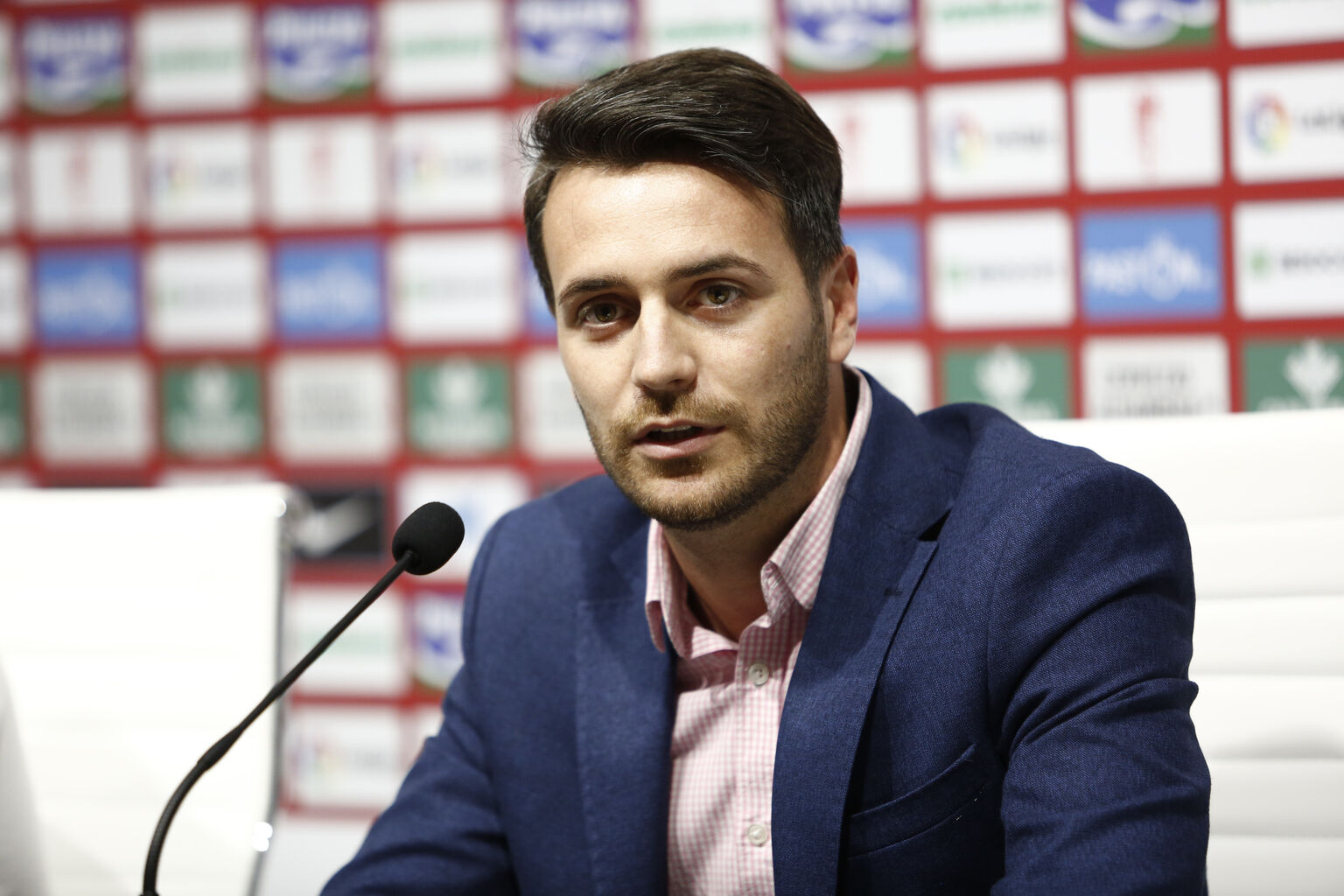Diego Martínez: The Messiah of Granada
The city of Granada is renowned for a variety of things — the medieval Arab citadel known as the Alhabrama, the Flamenco dancers, the bull-fighting, the pomegranates — but football isn’t one of them.
Since the club’s founding in 1931, Granada CF have yo-yoed back and forth the top three divisions of the Spanish footballing pyramid, but their fortunes took a turn for the worse in 2002, when they were relegated to the fourth tier due to non-payment of wages to their players. The club spent the entire noughties crippled due to financial difficulties, and by 2009, found themselves on the brink of collapse.
Just when it seemed Los Nazaríes were done for, Serie A side Udinese saved the day. The Italian club signed a partnership agreement with Granada, in which the Zebrette sent Granada several first team players, as well as various members of the youth teams and reserve squad. Granada would go on to win promotion, returning to the Segunda for the first time in 22 years.
Photo: A.A
The following season, they became the first ever promotion play-off champions, returning to the top flight after a 35-year absence. After six seasons of flirting with relegation, Granada’s luck ran out in 2017 when they finished bottom of the league with 20 points. The following season, El 5001 finished four points outside of the play-off spots in a topsy-turvy campaign that saw three different managers sacked by the club’s leadership.
In need of a manager who could take the club back to the promised land, the club hierarchy made the decision to hire 37-year-old Vigo native Diego Martínez, fresh from being sacked by Osasuna after finishing a point off the play-off spots.
Martínez had made his way up Celta Vigo’s academy, establishing himself as a promising fullback who could deputize on either flank, before joining third division side Cádiz in 1999. However, months after swapping Galicia for Andalusia, his dreams of becoming a professional footballer were cut short due to injuries, with Martínez hanging up his boots at 20 years old.
He immediately began his coaching career in Granada, managing the youth divisions of minnows CD Imperio de Albolote whilst also playing for their first team. In 2004, he took a new job in Granada, this time as the youth coordinator of Arenas Armilla. Martínez would move up the coaching ranks in Armilla, being promoted to assistant coach before assuming the position of first team manager in July 2006. After one season coaching in the Tercera, Martínez moved on to another Granada-based side, serving as Motril’s manager for two years.
In October 2009, Martínez took a backroom role at Sevilla, where he would manage both the C team and the Juvenil team before replacing Javi Navarro as Michel’s assistant manager to the first team. He took charge of the B side in 2014, guiding them to promotion to the Segunda two years later and keeping them afloat in the second division in 2016/17. Nevertheless, he elected to depart Andalusia for the first time since his playing days at Celta, joining Osasuna shortly after the club’s relegation from La Liga.
Photo: Pablo Lasaosa
After failing to make the play-offs with the Basque side, Martínez vacated his post and returned to Granada, this time taking the reins at the biggest club in the city.
His time in charge of Granada didn’t start off on the right foot. After failing to sell or rescind the contracts of veterans Javi Varas and Raúl Baena, Granada were impeded from signing a center back or a center forward, two of Martínez’s transfer priorities, due to the Segunda’s salary limits. Moreover, Granada had lost key players such as Matthieu Saunier, Joselu, and Darwin Machís, in an exodus that saw 12 players depart the club as well as six loanees.
Operating on a shoestring budget, Granada spent a total of $80,000 in the transfer market. Álvaro Vadillo arrived on a free transfer after winning promotion to the Primera with Huesca, whilst Álex Pozo, who played under Martínez at Sevilla B, joined on loan. Others such as Fede Vico, Fede San Emeterio and Nico Aguirre packed their bags for the Nuevo Estadio de Los Cármenes.
From the offset, Martínez employed a 4-2-3-1 formation, placing a strong emphasis on defensive solidity and quick counterattacks. The result? Granada finished second thanks to the best defense in the league, conceding just 28 goals in 42 matches. Their slightly above average attacking unit — which ranked fifth in goals scored and eighth in big chances created — managed to get the job done, but it was the defense, typically consisting of Rui Silva in goal, and Victor Díaz, Germán Sánchez, José Antonio Martinez, and Quini across the back four, that led Granada back to the promised land.
Despite having the lowest budget in the entire top flight, sporting director Fran Sánchez once again did a shrewd job of reconstructing Granada’s squad in the summer transfer window. Portuguese center back Domingos Duarte joined from Sporting CP for €3 million, whilst Darwin Machís returned from his one-year spell at Udinese for the exact same fee. Sánchez arranged for Fede Vico’s loan spell to become permanent, whilst bringing in Yan Brice Eteki and Carlos Fernández (loan), both of whom had played under Martínez at Sevilla B.
Photo: Alex Cámara / Granada Hoy
José Antonio Martinez returned from Eibar for a second straight loan spell, whilst Maxime Gonalons (loan), Ismail Köybasi (free transfer), Yangel Herrera (loan), and Neyder Lozano (free transfer) arrived at the Nuevo Estadio de Los Cármenes.
The crown jewel of them all, though, was 34-year-old striker Roberto Soldado who arrived on a free transfer following the expiry of his contract at Fenerbahçe. He didn’t take long to make his mark; after falling behind 4-2 to his former side Villarreal on opening day, Soldado scored a goal and provided an assist to hold the Yellow Submarine to a draw. Soldado has since become a leader for Granada both on the pitch and in the dressing room, scoring 11 goals and forming a deadly duo with Carlos Fernández in attack.
Martínez has often gone with his tried and trusted 4-2-3-1 this season, but he’s also experimented with the 5-3-2 and 4-4-2 formations depending on what the opposition calls for. After losing to Sevilla in the second match day, Granada bounced back with victories against Espanyol and Celta Vigo, but their baptism of fire came on September 21, when they faced off against the defending champions — Ernesto Valverde’s Barcelona. On this occasion, Martínez went with the 4-2-3-1, with Ramon Azeez and Antonio Puertas joining Soldado and Machís in attack.
From the moment that Guillermo Cuadra Fernández blew his whistle, Granada pressed like hungry wolves ready to hunt down the flock of sheep who just happened to be wearing Blaugrana colors. Soldado quickly won possession from Junior Firpo, who failed to control the loose ball. Firpo unsuccessfully attempted to pull down Soldado for a free kick, who kept his balance and played a through ball past Firpo and into the advancing Puertas. Puertas teed up his options too slowly, and his shot careened off Gerard Piqué and into the path of Azeez, who headed home into an empty net in the second minute.
Granada continued to mount wave after wave of attack on the champions. Puertas tip-toed his way to the edge of the box before firing a low shot into the side-netting, whilst Herrera also nearly added a second with a high shot in the first half. Martínez’s tactics effectively nullified Valverde’s front three of Antoine Griezmann, Luis Suárez and Carles Pérez, with Herrera shifting in between Duarte and Sánchez in defense and Azeez, a defensive midfielder by trade, dropping from his #10 position and into midfield to help Granada dig deep.
Despite Lionel Messi’s halftime entrance, Barcelona could not find a way through Granada’s stingy defense and in the 63rd minute, they conceded a penalty after Arturo Vidal handled the ball in the box. Vadillo converted from the spot to seal the victory, condemning the Catalans to their worst start in 25 years. Granada, on the other hand, moved to the top of the table.
Photo: Aitor Alcalde / Getty
They’ve kept things simple — remaining compact, stifling opposition attacks, and breaking on the counter — but once again, it’s gotten the job done. For the first time in the club’s 89-year history, Granada will be playing European football next season after finishing seventh in La Liga. In addition, they made it all the way to the semi-finals of the Copa del Rey, their best finish in the competition since 1959.
Over the past decade, José Bordalás and Diego Simeone have taken Spanish clubs of modest proportions and delivered them to unprecedented heights, all the while playing a scrappy, win-at-all-costs style of football. Martínez has done the same with Granada, taking the Matagigantes from a mid-table position in the Segunda to Europa League football in the span of two years.
At 39 years old, Diego Martínez is the youngest manager in La Liga, but he’s building a legacy that can last a lifetime.
By: Tosin Holmes
Featured Image: @GabFoligno




